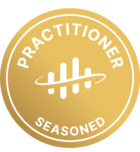The Product Release Spotlight Webinar recording for February can be found here.
Cognite Data Fusion (CDF) streams data into the CDF data model, where the data is normalized and enriched by adding connections between data resources of different types to provide better business decisions. With this release, you can ingest geospatial data into CDF to contextualize and map with other CDF resource types to deliver accurate spatial analysis and statistics.
Read more on this and all the other improvements for the CDF February 2022 release below.
Geospatial data
Work with geospatial data using the Geospatial API and Python & JavaScript SDKs to handle the positioning and geometry of CDF data. We currently support a multitude of coordinate reference systems (CRS), but you can add other entries from the European Petroleum Survey Group (EPSG) as a custom CRS. You can also transform an input CRS to the defined CRS to improve the search in geometrics. Read more.
Ingest PI Asset Framework data to CDF
The new Cognite PI Asset Framework (AF) extractor is considered an extension to the Cognite PI extractor. The Cognite PI AF extractor retrieves a dump of the asset hierarchy from the Asset Framework on the PI Server and ingests this into Cognite RAW. Subsequently, the extractor regularly checks for updates in the PI asset framework and ingests any changes into CDF.
Delete asset hierarchies using CDF Transformations
You can now delete asset hierarchies in CDF using CDF Transformations. Items are deleted by their internal ID, and non-existing IDs are ignored. Read more about CDF Transformations here.

Ingest data into CDF Relationships using PostgreSQL gateway
We're rolling out the option to use the PostgreSQL gateway and Azure Data Factory (ADF) to ingest data directly into CDF Relationships. Select the public.relationships table in your ADF sink. Learn how here.
Ingest time series data points directly into CDF Data points using the Cognite DB extractor
The Cognite DB extractor, version 2.4.1, provides a new option to ingest data points directly into CDF Data points instead of Cognite RAW. Set destination type as TIME_SERIES in your configuration file.
Early adopter programs
Cognite offers several Early adopter programs to our users. We encourage you to take this opportunity to learn about and test our features currently in the making. Navigate to Cognite Hub , open the Group tab, and select Request to join to become an Early adopter candidate.


 Check the
documentation
Check the
documentation Ask the
Community
Ask the
Community Take a look
at
Academy
Take a look
at
Academy Cognite
Status
Page
Cognite
Status
Page Contact
Cognite Support
Contact
Cognite Support


